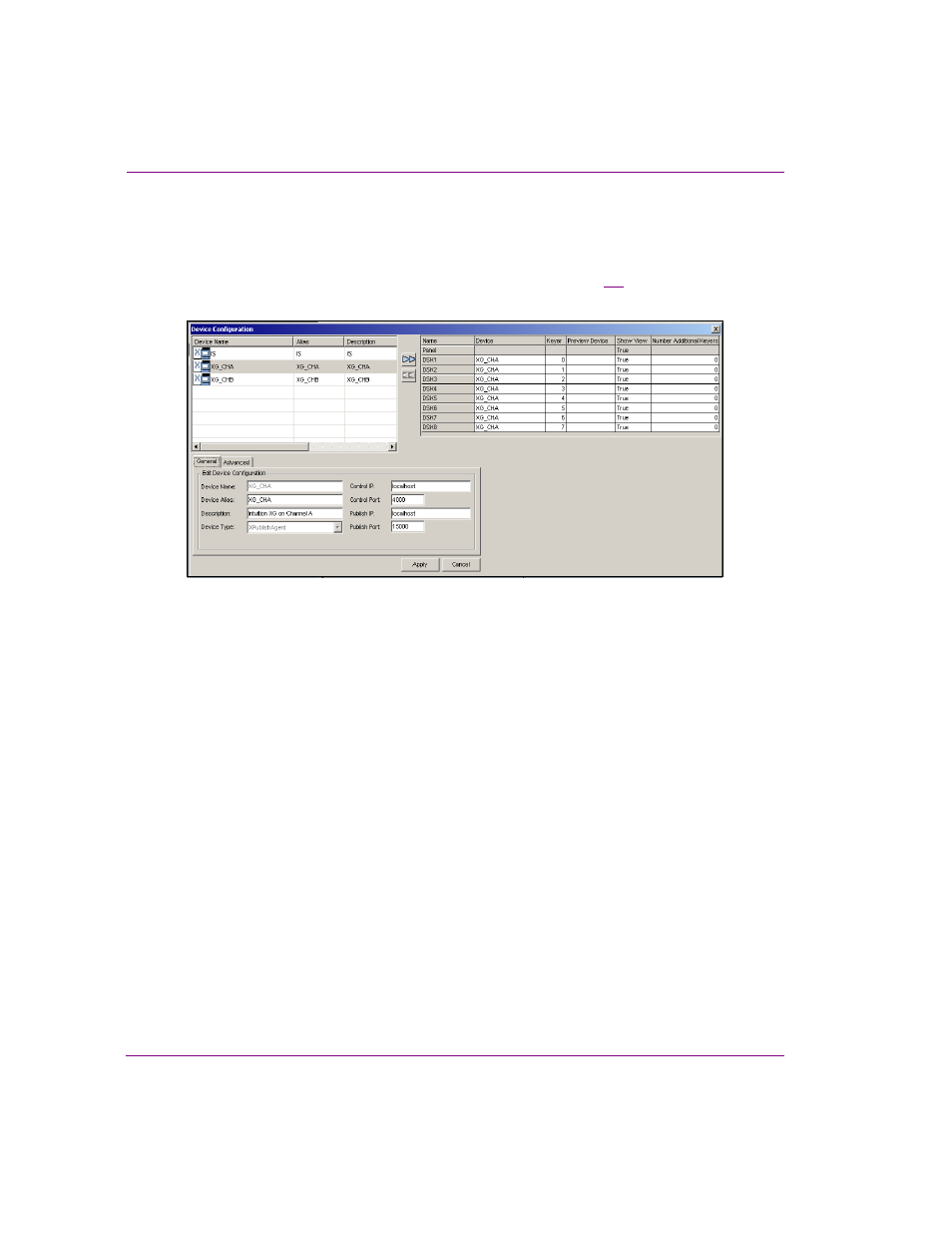Device manager, Device manager -6 – Grass Valley Intuition XG v.5.0 User Manual
Page 39

3-6
Intuition XG Configuration Guide
Intuition XG’s Desktop Applications & Tools
Device Manager
As the intermediary between the automation system and the Intuition XG device, Xplay
must establish a connection directly with the Intuition XG device. This connection is defined
by adding the Intuition XG device to Xplay’s Device Manager (figure
). The Device
Manager is accessed by selecting Xplay’s T
OOLS
>D
EVICE
M
ANAGER
menu command.
Figure 3-4. The Intuition XG device is added to Xplay’s Device Manager
Adding the device involves creating a device configuration profile, which contains the
following properties:
General tab
• D
EVICE
N
AME
, D
EVICE
A
LIAS
and D
ESCRIPTION
• D
EVICE
T
YPE
: The device type for Intuition XG devices must always be
XP
UBLISH
A
GENT
.
• C
ONTROL
IP: The network location (IP address, hostname, or localhost) of
the selected output device. The host must be available on the network.
• C
ONTROL
P
ORT
: The networking port that serves as a channel for sending
commands to and from the output device.
• P
UBLISH
IP: The network location (IP address, hostname, or localhost) of
the selected output device. The host must be available on the network.
• P
UBLISH
P
ORT
: The networking port that serves as a channel for publishing
assets. Typically, this value is set to 15000.
Advanced tab
• C
LIP
T
EMPLATE
, C
EL
T
EMPLATE
, I
MAGE
T
EMPLATE
: The name of the template
that is used to play out clips, cel animations, and/or images.
• E
XTERNAL
K
EYER
: This is an optional setting which allows you to configure the
Intuition XG to control a master control switcher (i.e. Imagestore 750) by
specifying the master control switcher in the E
XTERNAL
K
EYER
property. Once
